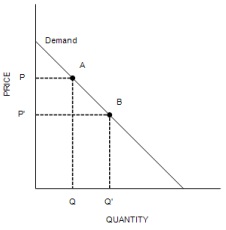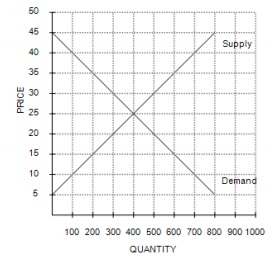Assignment:
1. A production possibilities frontier is bowed outward when
a. the more resources the economy uses to produce one good, the fewer resources it has available to produce the other good.
b. an economy is self-sufficient instead of interdependent and engaged in trade.
c. the rate of trade-off between the two goods being produced is constant.
d. the rate of trade-off between the two goods being produced depends on how much of each good is being produced.
2. For a self-sufficient producer, the production possibilities frontier
a. is the same as the consumption possibilities frontier.
b. is greater than the consumption possibilities frontier.
c. is less than the consumption possibilities frontier.
d. is always a straight line.
Assume that Cuba and Denmark can switch between producing coolers and producing radios at a constant rate
Table below
|
|
Output Produced in One Day
|
|
Coolers
|
Radios
|
|
Cuba
|
12
|
6
|
|
Denmark
|
24
|
3
|
3. Refer to Table above. Cuba's opportunity cost of one cooler is
a. 0.5 radios, and Denmark's opportunity cost of one cooler is 0.125 radios.
b. 0.5 radios, and Denmark's opportunity cost of one cooler is 8 radios.
c. 2 radios, and Denmark's opportunity cost of one cooler is 0.125 radios.
d. 2 radios, and Denmark's opportunity cost of one cooler is 8 radios.
4. Refer to Table above. Assume that Cuba and Denmark each has 8 days available for production. Originally, each country divided itstime equally between the production of coolers and radios. Now, each country spends all itstime producing the good in which it has a comparative advantage. As a result, the total output of radiosincreased by
a. 3.
b. 12.
c. 9.
d. 96.
5. Refer to Table above. At which of the following prices would both Cuba and Denmark gain from trade with each other?
a. 1 radio for 1 cooler
b. 1 radio for 4 coolers
c. 1 radio for 10 coolers
d. 1 radio for 15 coolers
6. Refer to Table above. Cuba and Denmark would not be able to gain from trade if Denmark's opportunity cost of one radio changed to
a. 0 coolers.
b. 1 cooler.
c. 2 coolers.
d. Cuba and Denmark can always gain from trade regardless of their opportunity costs.
7. Which of the following is not a characteristic of a perfectly competitive market?
a. Different sellers sell identical products.
b. There are many buyers and sellers.
c. Sellers must accept the price the market determines.
d. There is no free entry or exit.

8. Refer to Figure above. The movement from point A to point B on the graph shows
a. a decrease in demand.
b. an increase in demand.
c. a decrease in quantity demanded.
d. an increase in quantity demanded.
9. Refer to Figure above. The movement from point A to point B on the graph is caused by
a. an increase in price.
b. a decrease in price.
c. a decrease in the price of a substitute good.
d. an increase in income.
10. Refer to Figure above. It is apparent from the figure that the
a. good is inferior.
b. demand for the good decreases as income increases.
c. demand for the good conforms to the law of demand.
d. good is a normal good.
11. Which of the following would shift the demand curve for gasoline to the right?
a. A decrease in the price of gasoline
b. An increase in consumer income, assuming gasoline is a normal good
c. An increase in the price of cars, a complement for gasoline
d. A decrease in the expected future price of gasoline
12. If a decrease in income increases the demand for a good, then the good is
a. a substitute good.
b. a complementary good.
c. a normal good.
d. an inferior good.

13. Refer to Figure above. Equilibrium price and quantity are, respectively,
a. $30 and 500 units.
b. $20 and 300 units.
c. $25 and 400 units.
d. $15 and 200 units.
14. Refer to Figure above. At a price of $15, there would be a
a. surplus of 400 units.
b. surplus of 200 units.
c. shortage of 400 units.
d. shortage of 200 units.
15. Refer to Figure above. At what price would there be an excesssupply of 400 units of the good?
a. $40
b. $30
c. $35
d. $25